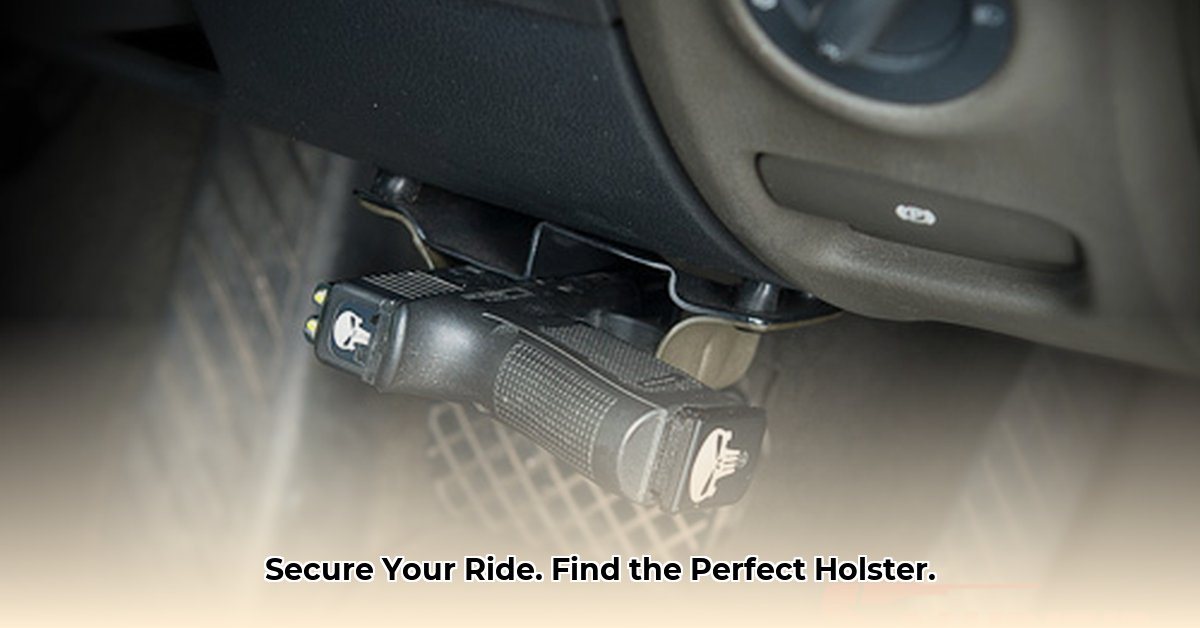
Choosing the right car phone holster can be surprisingly complex. With numerous options available, from magnetic mounts to dashboard clings, finding the perfect fit for your phone and vehicle requires careful consideration. This comprehensive guide simplifies the process, providing a step-by-step approach to selecting, installing, and safely using a car holster.
Understanding Car Holsters: More Than Just a Phone Holder
A car phone holster is more than just a convenient place to store your smartphone; it's a crucial tool for enhancing both safety and convenience during your daily drives. By securely holding your phone within easy reach, a quality car holster enables hands-free access to navigation, calls, and music, allowing you to keep your eyes on the road and your hands on the wheel. But with a variety of types available, understanding their differences is key to making an informed choice.
Types of Car Holsters: A Detailed Comparison
Several types of car holsters cater to different preferences and vehicle interiors. Let's explore the most common options and their respective pros and cons:
Magnetic Car Holsters
Magnetic car holsters offer a simple and stylish solution. A small metal plate adheres to your phone (often integrated within a case), allowing for quick attachment and detachment to the magnetic mount.
Pros: Easy to use, sleek design, strong hold (for appropriately sized phones and cases).
Cons: May not be suitable for all phones or cases. The magnetic field might interfere with some phone functions (like the compass). Can be more expensive than other options. Might not hold heavier phones securely.
Vent Mount Car Holsters
These holsters attach directly to your car's air vents using a clip or clamp mechanism.
Pros: Space-saving, generally unobtrusive, typically affordable.
Cons: Can restrict airflow slightly. Stability can vary based on the vent design and phone weight. Not all vents are suitable for all vent mounts.
CD Slot Car Holsters
These older-style mounts utilize your car's CD player slot (if you have one!).
Pros: Often provide a reliable and firm hold. Usually inexpensive.
Cons: Only compatible with vehicles with functioning CD players. Becoming increasingly obsolete with the decline of CD players. Might obstruct access to other controls.
Dashboard Mounts
Dashboard mounts utilize either strong adhesive or suction cups to attach to your dashboard.
Pros: Highly customizable positioning. Offers versatile placement options.
Cons: Improper placement may become a distraction. Adhesive or suction cups might leave residue or not adhere well to all dashboard materials. Can loosen over time.
Choosing the Right Car Holster: A Step-by-Step Guide
Selecting the ideal car holster involves considering several factors:
1. Measure Your Phone: Accurately measure your phone's dimensions, including its case, to ensure compatibility.
2. Assess Your Car's Interior: Examine your dashboard, air vents, and CD player (if present) to identify potential mounting locations and any limitations.
3. Prioritize Your Needs: Consider what features are most important—ease of use, stability, adjustability, or aesthetics.
4. Read Reviews: Consult online reviews from other users to gain valuable insights and identify potential issues.
5. Select Your Mount Type: Choose a mount type compatible with your phone and car, prioritizing safe and secure phone placement.
Installation Guide: A Smooth and Secure Setup
Installation varies depending on the mount type, but these general tips apply:
Clean the Surface: Thoroughly clean the area where the mount will be attached to ensure optimal adhesion or a secure grip.
Follow Instructions: Carefully read and adhere to the manufacturer's instructions to avoid damaging your phone, vehicle, or the mount.
Securely Fasten: Double-check that all components are securely attached before driving to prevent accidental dislodgement.
Safe Driving Practices: Prioritizing Road Safety
While a car holster enhances safety by enabling hands-free phone access, it's crucial to emphasize responsible driving:
Minimize Distractions: Avoid using your phone while driving, except in completely safe, stationary situations.
Hands-Free Isn't Always Safe: Even voice commands can distract from driving. Prioritize undivided attention to the road.
Obey Traffic Laws: Many jurisdictions have laws prohibiting handheld phone use while driving. Adhere to all applicable regulations.
Maintenance and Care: Extending Your Holster's Lifespan
Regular cleaning and maintenance help ensure your holster's longevity:
Regular Cleaning: Gently wipe dust and fingerprints with a damp cloth. Avoid harsh chemicals.
Regular Inspection: Check for wear or damage and replace any damaged components promptly.
Protect from Extremes: Avoid exposing the holster to direct sunlight or extreme temperatures.
Conclusion: Find Your Perfect Fit
The best car holster is the one that best suits your individual needs and driving style. By following this guide, you can confidently select, install, and use a car holster that prioritizes both convenience and road safety. Remember, responsible driving practices always take precedence.